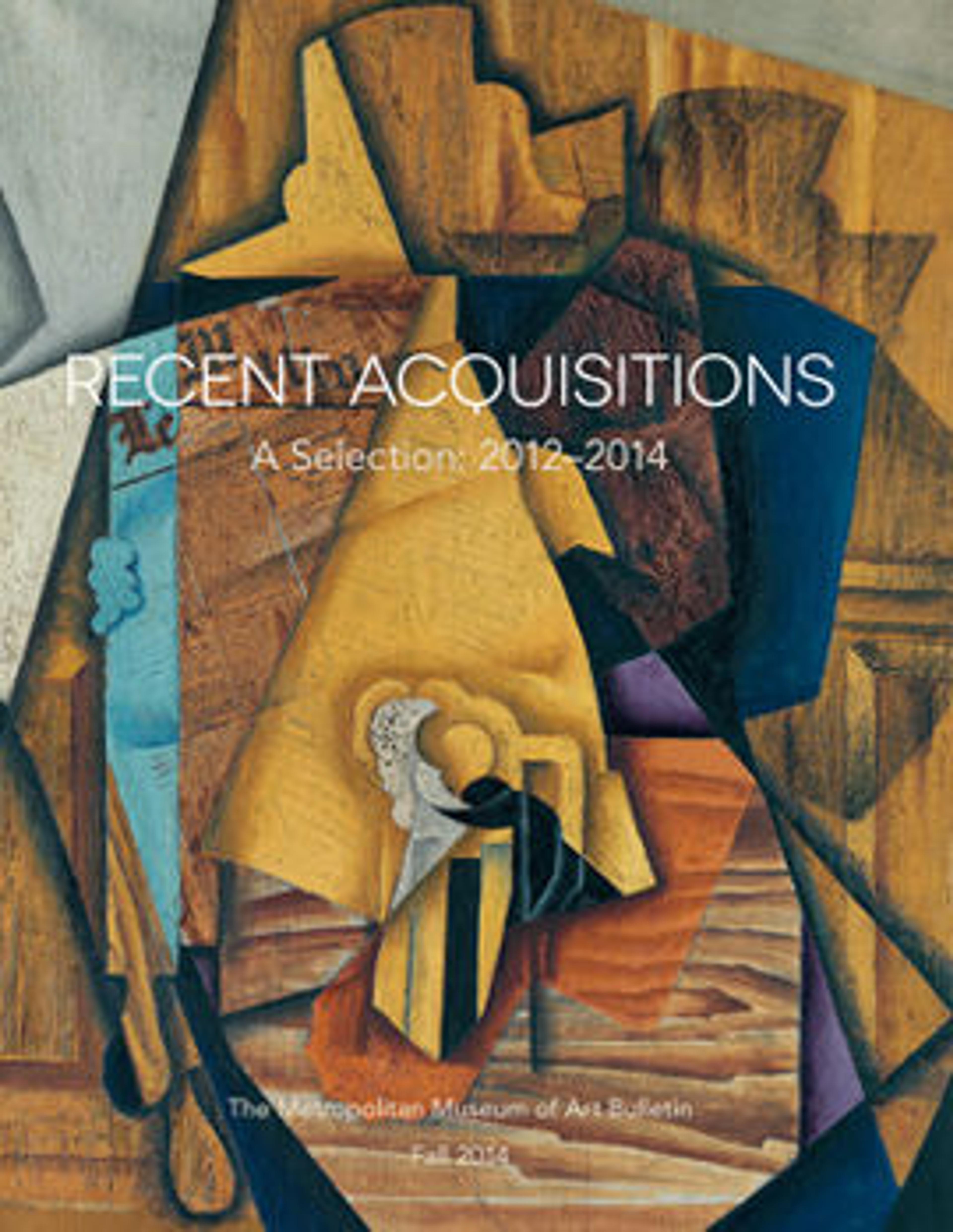Allegorical Tapestry with Sages of the Past
The two sections, originally conjoined, feature standing figures paired as if in conversation. Represented, from left to right, are Saints Thomas Aquinas, Bernhard, Augustine, Job, Cato (the younger), and Seneca, each identified in a titulus above. The figures stand on free-floating consoles. Judging from two other fragments that share the same designs, the hanging originally had at least twelve figures drawn from diverse ages and sources, including antiquity, the Hebrew Bible, histories, and popular culture.
The quatrains in the inscribed banderoles are taken from the poem Practical Wisdom written by the 13th-century poet Freidank and preserved in a handful of Upper Rhenish/Swabian manuscripts dating to the 1460s and 70s. Collectively, these erudite figures form an allegorical compendium of late medieval learning and related moral and spiritual values. Job, for example, admonishes the viewer: "Be willingly alone and keep your thoughts pure, and have the Ten Commandments before your eyes, and above all love God." These rare hangings are distinguished by the high quality of weaving, the richness of design, the intriguing subject matter, and the insight they provide into to medieval thought and ethics.
How was this tapestry made?
The tapestry was woven in a discontinuous weft-faced plain weave, where the underlying structure—undyed linen warp—was covered with dyed wool and metal thread weft. Cut weft loops create a pile-like effect in small areas of the floral background, and metal thread is most noticeably used in the jeweled clasp of St. Thomas’s cope. Dye analysis revealed the use of four dyes common in medieval Europe—weld(?), orchil, madder, and an indigotin-containing dye such as woad.
During a recent conservation treatment at the Museum, the distorted weave structure was realigned and fragile areas were stabilized with stitches to a fabric support to strengthen the panels for display. While the height of the panels is almost complete, the original width of the weaving remains unknown. There is a loss between the two panels, which is indicated by a gap.
The quatrains in the inscribed banderoles are taken from the poem Practical Wisdom written by the 13th-century poet Freidank and preserved in a handful of Upper Rhenish/Swabian manuscripts dating to the 1460s and 70s. Collectively, these erudite figures form an allegorical compendium of late medieval learning and related moral and spiritual values. Job, for example, admonishes the viewer: "Be willingly alone and keep your thoughts pure, and have the Ten Commandments before your eyes, and above all love God." These rare hangings are distinguished by the high quality of weaving, the richness of design, the intriguing subject matter, and the insight they provide into to medieval thought and ethics.
How was this tapestry made?
The tapestry was woven in a discontinuous weft-faced plain weave, where the underlying structure—undyed linen warp—was covered with dyed wool and metal thread weft. Cut weft loops create a pile-like effect in small areas of the floral background, and metal thread is most noticeably used in the jeweled clasp of St. Thomas’s cope. Dye analysis revealed the use of four dyes common in medieval Europe—weld(?), orchil, madder, and an indigotin-containing dye such as woad.
During a recent conservation treatment at the Museum, the distorted weave structure was realigned and fragile areas were stabilized with stitches to a fabric support to strengthen the panels for display. While the height of the panels is almost complete, the original width of the weaving remains unknown. There is a loss between the two panels, which is indicated by a gap.
Artwork Details
- Title:Allegorical Tapestry with Sages of the Past
- Date:ca. 1480–1500
- Geography:Made in Middle Rhineland, Germany
- Culture:German
- Medium:Linen, wool, brass metal-strip-wrapped silk
- Dimensions:a: 54 1/2 × 84 1/2 in. (138.4 × 214.6 cm)
b: 54 1/2 × 83 1/2 in. (138.4 × 212.1 cm)
Mount (a): 57 1/8 × 87 3/8 × 4 in., 150 lb. (145.1 × 221.9 × 10.2 cm, 68 kg)
Mount (b): 57 1/8 × 85 7/8 × 4 in., 150 lb. (145.1 × 218.1 × 10.2 cm, 68 kg) - Classification:Textiles-Tapestries
- Credit Line:The Cloisters Collection, 2014
- Object Number:2014.66a, b
- Curatorial Department: Medieval Art and The Cloisters
More Artwork
Research Resources
The Met provides unparalleled resources for research and welcomes an international community of students and scholars. The Met's Open Access API is where creators and researchers can connect to the The Met collection. Open Access data and public domain images are available for unrestricted commercial and noncommercial use without permission or fee.
To request images under copyright and other restrictions, please use this Image Request form.
Feedback
We continue to research and examine historical and cultural context for objects in The Met collection. If you have comments or questions about this object record, please contact us using the form below. The Museum looks forward to receiving your comments.
